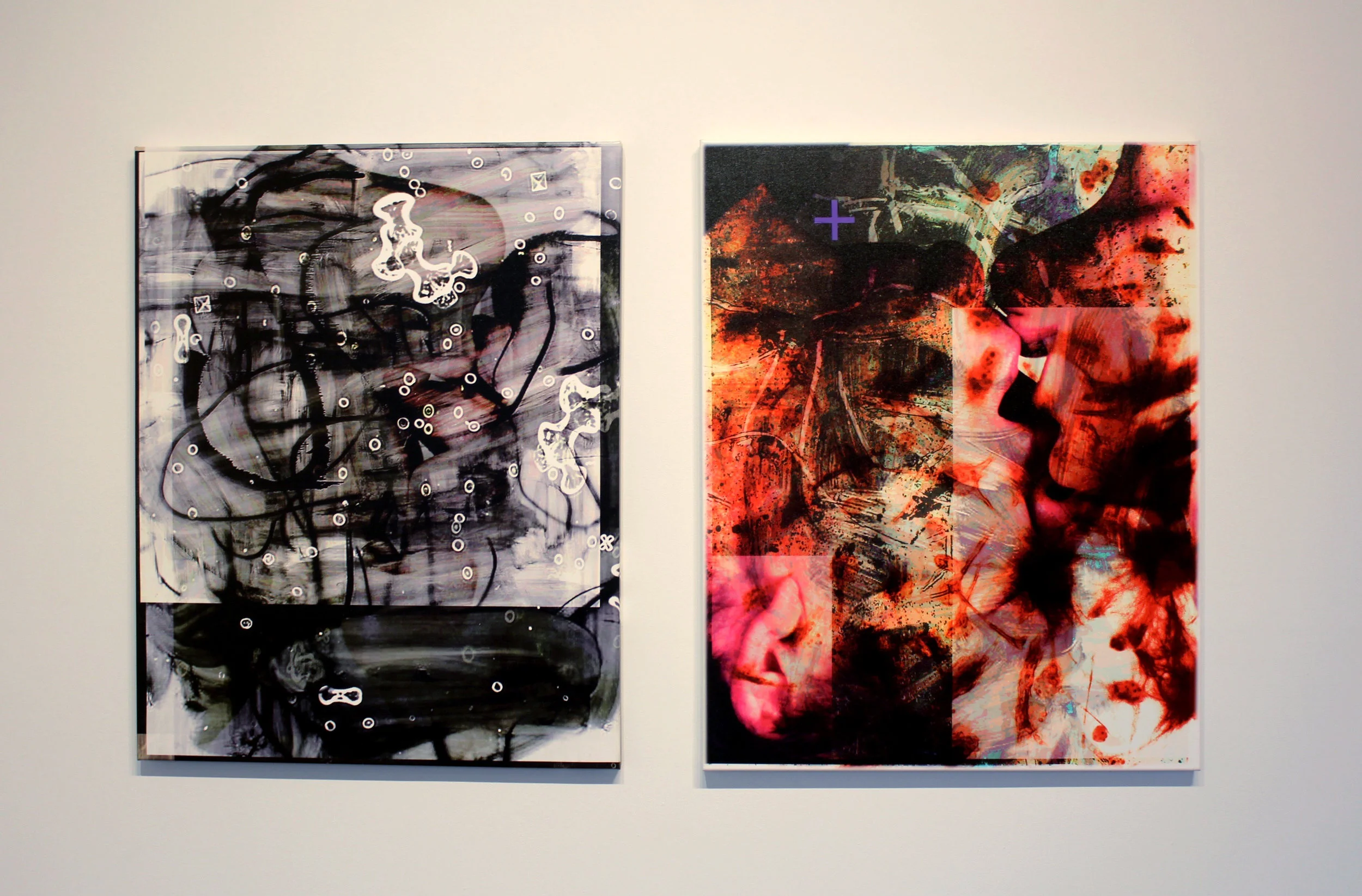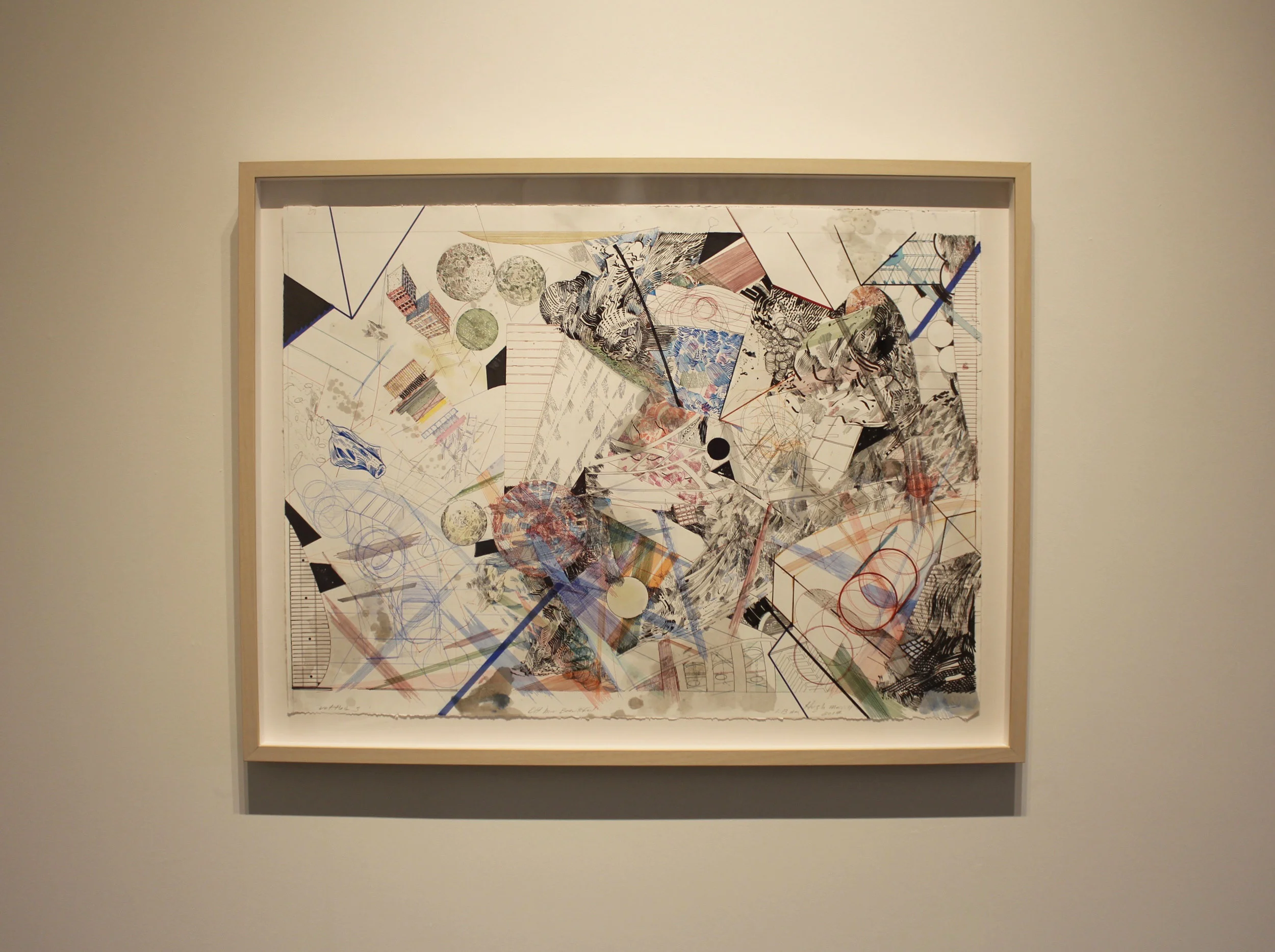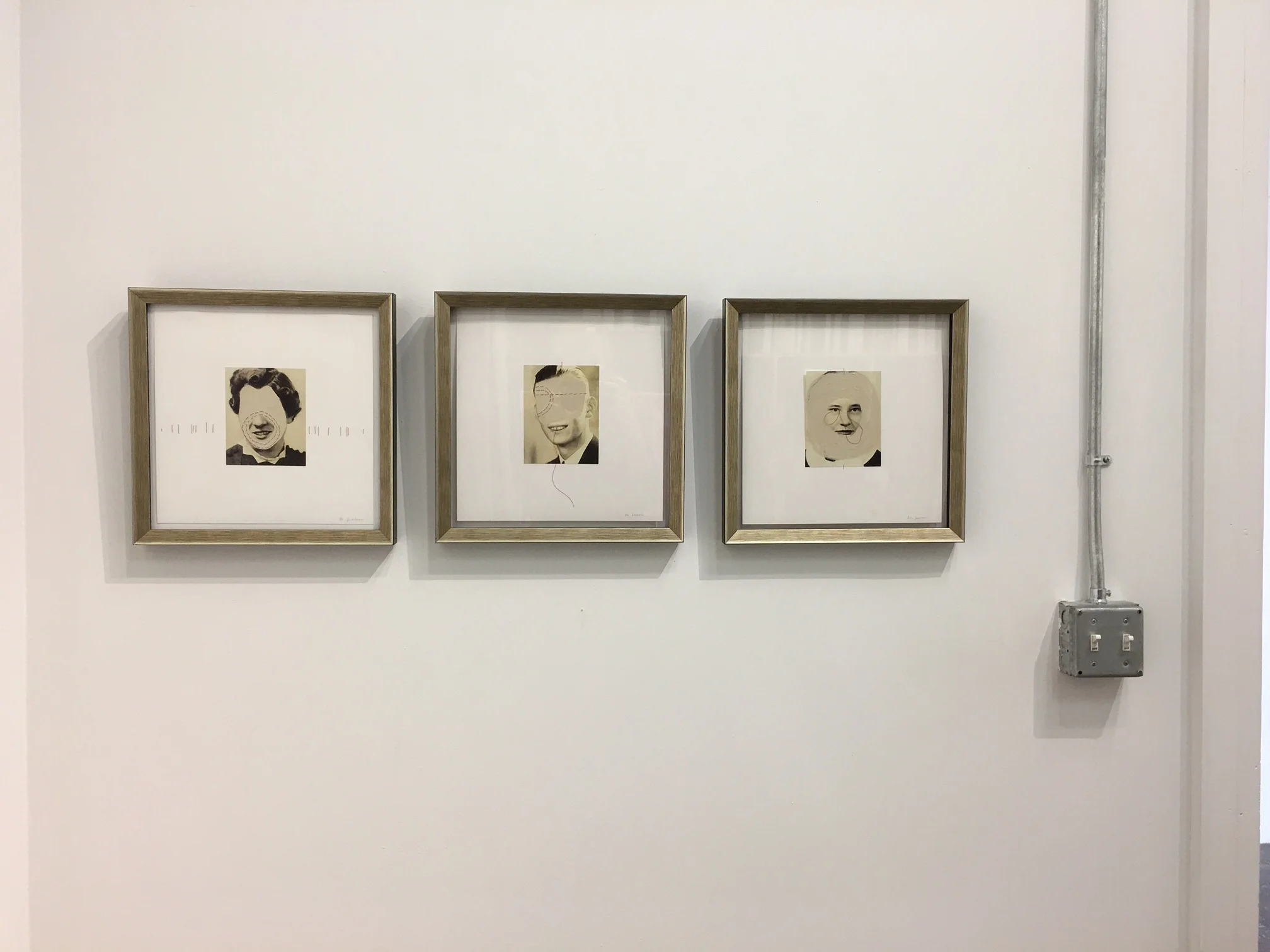the vortex trinity
April/May 2017
FOR IMMEDIATE RELEASE:
Kansas City, Mo. On Friday, April7th, 2017 from 5-10 PM the Todd Weiner Gallery will host the exhibition opening for “the vortex trinity” featuring three major artists based in Kansas City: Hugh Merrill, Miguel Rivera, and Jim Sajovic. The exhibition will run through Saturday May 27th, 2017.
There are major moments in an artists career that define their art practice. These zenith moments are experienced in the mastery of personal style, challenging experiences that redefine ones thinking, or even conquering a seemingly unconquerable quest.
In September 2016, Jim Sajovic, longstanding professor at the Kansas City Art Institute celebrated his retirement. Anyone who knows Jim had no doubt that his retirement would only invigorate his art making process. The work that Jim has produced in the months following is nothing short of prolific, an entire new body to be exact. “Provisional Chaos”, is made up of colorful energized paintings that play on alignments and convergences of color and structural relationships. The concept and process of creating these paintings nods to Raphael Rubenstein’s notion of “Provisional Painting” where artists, “In different ways, all deliberately turn away from strong’ painting for something that seems to constantly risk inconsequence or collapse.” Jim sets out to create a piece with, “No idea what the appearance of the finished work will be.” Beginning with selected images from artists such as Albert Oehlen and Christopher Wood, Sajovic organically adds and retracts colors over layers of images of cells, viruses, minerals, lunar maps, Hubble photographs, and facial closeups until a finished product is achieved. “Provisional Chaos 2/26/17” incorporates Sajovic’s vibrant use of color with his newly developed highly abstracted forms in mastery of his personal style.
Miguel Rivera, a Kansas City transplant, is the current print chair of the Kansas City Art Institute, President of the Kansas City Artist Coalition, and recent winner of a three-year residency at Studios Inc. Miguel had a robust career in Mexico where he was classically trained and entered his career in higher education before moving to the United States to continue his own study. Landing in Kansas City has given Miguel the opportunity to educate students while continuing to further his art practice. As with many classically trained artists, a majority of the subject matter in his previous work linked heavily to the larger art historical cannon. In the last year, Miguel has confronted how he approaches the creative process. As a result, the body of mixed media work that has emerged is truly reflective of Miguel as an individual coming to terms with his ideological art discourse. All of the works in this body subsist of soft color combinations with vibrant bursts of statement colors filling the myriad of constructed geometric shapes over images of a Peruvian pigeon or even the chicken pox virus. Miguel states, “In my current work, I am visiting my recollection of events and structures that lead one’s daily life such as maps, the magic of belief in forces of physics and deep embedded images from baroque Mexican fades.” With these ideas in mind, Miguel layers manipulated photos and vector drawings which he deconstructs with a laser resulting in a complex push and pull between the layers in the work. The additive and subtractive process creates an ambiguity that Miguel relates to his experience of traveling, living in several environments, and being displaced all the while collecting a visual memory of the path.
The past year has been an especially hard battle for artist Hugh Merrill. In 2016 he was diagnosed with throat cancer and began to fight the disease that threatened his life. Hugh is a studio artist, community artist, educator, writer and poet. He helped to build the Kansas City art community as we know it today and has work in many major museums including MOMA, Harvard, Kemper Museum of Contemporary Art and the Nelson-Atkins Museum of Art. One of his greatest joys comes from the ability to connect, interact, and communicate with community members. Part of the journey in his fight with cancer was coping with the fact that for a while we would lose all verbal communication. His work in “the vortex trinity” was created during the time when he was not able to communicate with those around him. He embraced the harsh effects of the medicine coursing through his body and translated the emotional journey onto paper. This work is truly revolutionary in Merrill’s career. He incorporated his emblematic style of strong geometric shapes full of competing color and marks with a new element of deliberately empty geometric forms. The monoprints in this series are harmoniously unified in a way that is distinctly different of Hugh’s previous bodies of work. This work is a testament to Hugh’s character and his dedication to his practice as a life long artist. The work in “the vortex trinity” is a reflection of his ability to harness the energy from his major life moments and translate them into art.
“the vortex trinity” at the Todd Weiner Gallery in the Crossroads Arts District pairs these three dynamic artists as they define their place in the art world. Each of them brings a fresh approach to their work. All three were professors at the Kansas City Art Institute and have dedicated a significant part of their life to developing young artists. The Spencer Reference Library in the Nelson-Atkins Museum of Art is a pioneer in the cataloging of selected living artists careers. Through a program they have created entitled the Artist File Initiative, artists work together with the library to curate their file. The files contain researchable material of the artists which is available to not only academics but the entire community. All three artists in the “the vortex trinity” are members of the Artist File Initiative and contribute to ensure that others will be able to learn from their careers.
The second exhibition space in the Todd Weiner Gallery will open the exhibition “Welcome Home” by Kansas City Art Institute senior Ace Robinson. Robinson was instructed by all three of the professors showing in “the vortex trinity”. With their guidance, he was begun to hone his medium of choice, textiles. In reference to this work, Robinson says, “The quilts are being used as a mirror; a space to re-evaluate my childhood memories and come to understand how they have shaped my life today.”




























